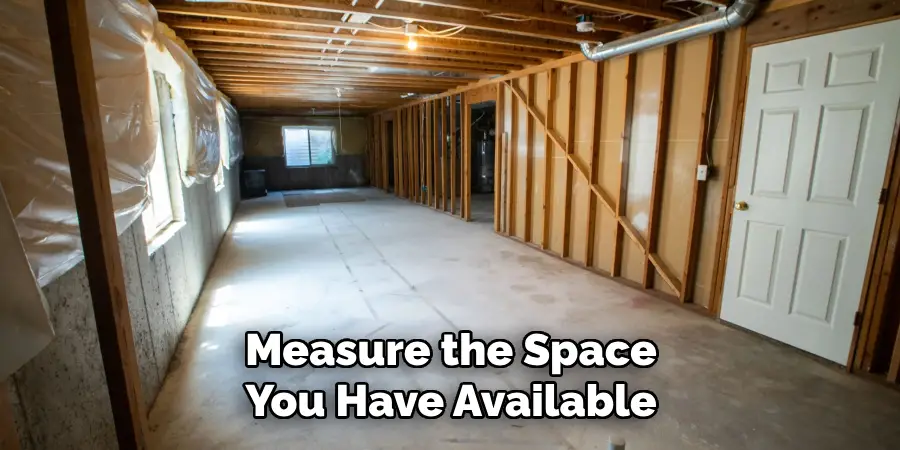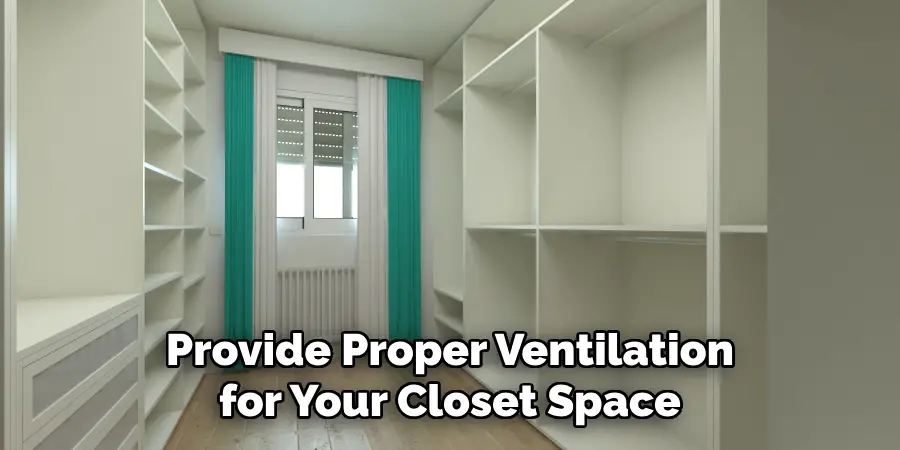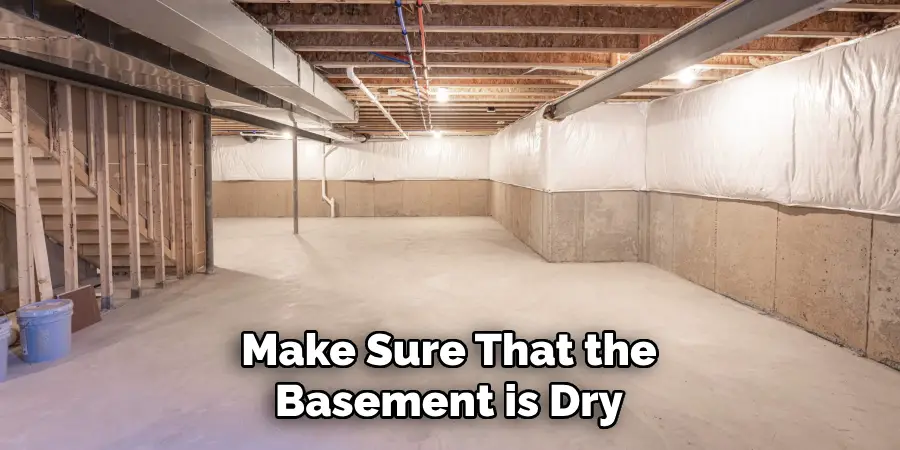Do you feel like your basement is a jumble of miscellaneous items, where nothing has its place? You’re not alone! Having an organized storage system can make all the difference when it comes to keeping your living space clean and clutter-free.

And one way to do just that is by building your own closet in the basement. Not only will this give you much-needed additional storage for blankets, coats, board games, and more – but it also adds value to your home!
Building a basement closet is a great project, as it can turn any unused space in your home into something more useful. From organizing tools to storing extra clothes, the possibilities are endless.
Whether it’s at your own home or a rental property, creating a functional basement closet has never been easier – but there are certain steps that must be taken if you want to make sure the construction of your custom-fitted closet succeeds. In this article, we’ll provide step-by-step instructions on how to build a basement closet!
Why May You Want to Build a Basement Closet?
1 . To Increase Storage Space
If you have a basement that is unused or underutilized, converting it into a closet can provide you with plenty of additional storage space. Having extra storage can be beneficial for storing household items such as seasonal clothing, gardening tools, holiday decorations, sports equipment, and more. It also frees up space in other areas of your home which may be cluttered due to lack of storage.
2 . To Save Money
Building a basement closet can be a more cost-effective solution compared to purchasing additional storage furniture or renting a storage unit. Plus, you have the added benefit of having access to your stored items at all times without any additional rental fees.
3 . To Increase Property Value
Adding a basement closet can increase the value of your property, making it a wise investment for homeowners who plan on selling in the future. It can be an attractive feature for potential buyers as it provides them with additional storage space, which is always a desirable feature in any home.

4 . To Create a Dedicated Storage Space
Basements are often used as dumping grounds for items that don’t have a designated storage space. By building a basement closet, you can create a dedicated storage area for all your belongings, making it easier to keep your home organized and clutter-free.
5 . To Add Functionality
Converting your basement into a closet can also add functionality to the space. It can serve as a multipurpose room, serving not only as a storage area but also as a laundry room, home gym, or even a spare bedroom. This can be especially useful for homeowners with limited space in their main living areas.
6 . To Customize the Space
Building your own basement closet allows you to customize the space according to your specific storage needs and preferences. You can choose the layout, shelving options, and organization systems that work best for you, making the most of your available space.
How to Build a Basement Closet in 5 Easy Steps
Step 1: Measure and Plan
Before you start building your basement closet, it’s important to measure the space you have available. This will help you determine what kind of materials and shelving units you’ll need. You should also consider the overall layout of your basement and how the closet will fit into that space.

Step 2: Choose Materials
Once you have a plan in place, it’s time to choose the materials for your basement closet. Consider using moisture-resistant materials such as metal or plastic for the shelving units, as basements tend to be more prone to dampness and mold. You should also make sure that the materials you choose are sturdy and can support the weight of your items.
Step 3: Build the Frame
The first step in building your basement closet is to construct the frame. This will serve as the foundation for your shelving units and provide stability to the structure. You can use wood or metal studs for the frame, depending on your budget and preference.
Step 4: Install Shelving Units
After the frame is built, it’s time to install the shelving units. Make sure to measure and mark the placement of each shelf before securing them in place. You can also use adjustable shelves to customize the spacing according to your storage needs.
Step 5: Add Finishing Touches
To complete the construction of your basement closet, you can add finishing touches such as doors, drawers, and lighting. These will not only enhance the appearance of your closet but also make it more functional. You can also add hooks or hanging rods for additional storage options.
Now that you know the basic steps to build a basement closet, let’s dive into some additional tips and considerations.
Some Extra Tips to Build a Basement Closet
1 . Do Not Underestimate the Importance of Proper Ventilation
One important aspect to consider when building a basement closet is proper ventilation. Since basements are usually damp and have poor air circulation, it’s crucial to provide proper ventilation for your closet space. This will prevent any musty smell or mold growth in your closet.

2 . Use Waterproof Materials
Basements tend to be prone to moisture, especially if you live in a humid climate. To avoid any water damage to your closet and its contents, make sure to use waterproof materials such as vinyl flooring and mold-resistant drywall. You can also consider adding a dehumidifier or moisture barrier for extra protection.
3 . Make Use of Vertical Space
Basements usually have lower ceilings, so it’s important to make the most out of your vertical space when building a closet. Consider installing shelves and hanging rods that go all the way up to the ceiling, or use stackable storage bins for items you don’t need to access frequently.
4 . Utilize Lighting
Since basements usually have little natural light, proper lighting is essential for your basement closet. Consider installing overhead lights or LED strips to brighten up the space. You can also add a motion-sensor light for convenience.
5 . Plan for Extra Storage
Basement closets are ideal for storing seasonal items and other belongings that you don’t use often. Plan ahead and include extra storage solutions such as hooks, bins, and shelves to keep your closet clutter-free and organized.
6 . Don’t Forget the Door
The door to your basement closet is just as important as the interior. Consider installing a solid-core or fire-rated door, especially if your basement also serves as a utility room or storage area for hazardous materials. You can also add weather stripping to prevent drafts and improve energy efficiency.
Frequently Asked Questions
What Precautions Should I Take Before Building a Basement Closet?
- Make sure that the basement is dry and free from any moisture or water leakage. This is important for protecting your belongings stored in the closet.
- Check if there are any existing pipes, wires or other utility lines that may intersect with the planned location of the closet. If so, you will need to reroute them before beginning construction.
- It is important to consider the type of flooring in your basement. If it is carpet, make sure it is mold and mildew-resistant. If you have a concrete floor, check for any cracks or uneven surfaces that may need to be repaired before installing shelves or racks.

How Do I Properly Measure the Space for My Basement Closet?
- Start by measuring the length, width, and height of the space where you plan to install your closet. Be sure to account for any obstructions such as pipes or ductwork.
- Next, determine the size of shelves and racks that will fit in the space. Remember to leave some extra room on each side for easy access to items stored in the closet.
Can I Use Regular Materials for my Basement Closet?
- It is recommended to use materials that are moisture and mold-resistant, especially if your basement tends to be damp. Consider using materials such as plastic or vinyl-coated wire shelves, metal racks, and waterproof paint for the walls.
How Do I Maximize Storage in a Small Basement Closet?
- Use vertical space by installing floor-to-ceiling shelves or racks.
- Utilize the back of the closet door by installing hooks or hangers for smaller items.
- Use stackable storage containers to maximize space and keep items organized.
What is the Best Lighting Option for a Basement Closet?
- Basements often lack natural light, so it is important to choose lighting that will adequately illuminate the closet. Consider using LED lights or fluorescent lights that provide bright, white light.
- If possible, install a motion sensor or automatic lighting system for convenience and energy efficiency.
Conclusion
In summary, building a basement closet requires time, dedication and care. You must ensure all the necessary pieces of wood and wall panels are cut to measure as well as assemble them carefully. Don’t forget to add screws for further stabilization – this is especially important when building larger closets.
Now you know how to build a basement closet! With these steps in mind, you can finally have the needed closet storage space in your home! So don’t hesitate, to purchase the necessary materials today and get ready to build that closet you’ve been dreaming of! Who knows how much more energy efficient and productive you could be with organized living spaces?

